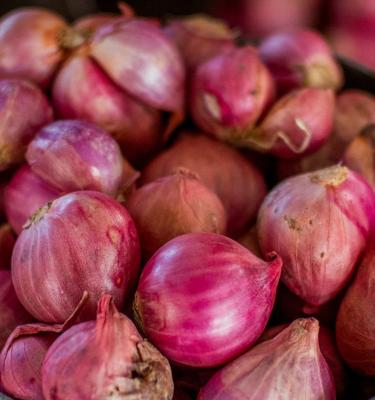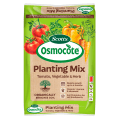

How to grow & care for shallots
Shallots (Allium cepa var. aggregatum) are a member of the onion family loved by chefs and home cooks for their mild and sweet flavour. Depending on the variety you choose, shallot bulbs come in a range of colours including, white, red, pink, golden and purple and are regularly used in French and Asian cuisine.
Shallots can be grown easily from seeds or dormant bulbs. In cool, warm or temperate regions shallots are normally planted in late winter or spring and harvested in late summer or early autumn. In subtropical areas however March - April is the ideal planting time.
Top 4 steps to growing shallots
- Choose a full sun position in your garden or grow in pots
- Improve the soil before planting by adding compost or Scotts Osmocote® Compost Premium Soil Improver
- If growing shallots from seeds - either direct sow them or start them in punnets filled with Scotts Osmocote® Seed & Cutting Mix
- If growing shallots from bulbs, don’t plant them too deep. Their tops should sit just above the soil surface.
Shopping List
- Shallot seeds or bulbs
- Scotts Osmocote® Compost Premium Soil Improver
- Scotts Osmocote® Controlled Release Fertiliser: Tomato, Vegetable & Herb
- If growing in pots, Scotts Osmocote® Plus Organics Tomato, Vegetable & Herb Potting Mix
- If growing from seeds, Scotts Osmocote® Seed & Cutting Mix
- Garden trowel or fork
- Defender Slug & Snail Pellets
Prepare
Shallots can be grown from seeds, seedlings or bulbs, in a full sun spot with a free draining soil. Shallots love to grow in a soil enriched with Scotts Osmocote® Compost Premium Soil Improver and a small amount of Scotts Osmocote® Controlled Release Fertiliser: Tomato, Vegetable & Herb - dig these through the top 10-20cm of soil before planting.
In cool, warm and temperate climates, it’s best to plant shallots in late winter or early spring. Subtropical gardeners should plant them around March or April.
Planting in the garden
Growing from bulbs
Plant shallot bulbs 15-20cm apart into prepared soil. Make sure you do not plant them too deeply - their tops should sit just above the soil surface.
Protect the new shallot shoots as they emerge from slugs and snails using Defender Slug & Snail Pellets.
Each single shallot bulb will produce 5-12 bulbs for harvest depending on the variety.
Growing from seeds or seedlings
Sow shallot seeds by sprinkling them onto the surface of Scotts Osmocote® Seed & Cutting Mix in punnets or direct sow them into your prepared garden soil. Cover lightly with more potting mix or soil. Don’t worry if the seeds germinate too closely together - they can be gently separated as you plant them into the garden.
Keep the soil moist while the shallot seeds germinate which will take 10-14 days. If you’ve started them in punnets they can be transplanted into your garden or larger pots to finish growing when the seedlings are about 7-10cm long - which will be about 4-6 weeks from sowing. Plant seedlings 15-20cm apart into prepared garden soil.
Direct sowed shallot seedlings should be thinned to allow 15-20cm between each plant once they are 5-10cm tall.
If you’d rather not grow from seeds then grow from bulbs which are also easily available in nurseries and garden centres.
Planting in pots
Shallots can be grown in medium to large pots that are 30-40cm deep with good drainage. Fill the pot with Scotts Osmocote® Plus Organics Tomato, Vegetable & Herb Potting Mix and plant bulbs or seedlings 15-20cm apart.
Alternatively shallot seeds can be direct sown onto the potting mix and thinned to allow 15-20cm between plants.
Protect new shallot growth from slugs and snails with Defender Slug & Snail Pellets.
Harvest
Harvest shallots in late summer or autumn when the foliage begins to yellow/brown off and flop over. Stop watering them at this time and dig the clusters of bulbs up carefully using a garden fork and brush of excess soil around the bulbs.
Once harvested put the clusters of bulbs out warm, protected place to completely dry for a couple of weeks. An old flyscreen door or piece of mesh makes an ideal drying rack.
Once completely dried, brush off remaining dirt, remove the stalks and store in mesh bags hung in a cool, dry place for up to 6 months.

Pests & Diseases
Slugs and Snails can chew on young shallot shoots, protect your shallot crop by setting beer traps (saucers filled with beer) or use Defender Slug & Snail Pellets.
Mulch between plants to retain moisture and reduce weeds - but keep mulch a few centimetres from the necks of shallot stalks to prevent rot.



